- Can Horses Eat Watermelons - September 23, 2023
- How to Get a Horse to Trust You - September 21, 2023
- Best Horse Wormers for Spring Guide - August 10, 2023
Horses are sensitive, emotional creatures and gaining their trust is vital to establish a good relationship with them. I’ve been working with horses for many years and have learned that even difficult horses are easier to work with once you gain their trust.
Traditional horsemanship generally uses intimidation to control horses, but the truth is that horses are more willing to cooperate when they trust and respect you. So, if you want to improve your relationship with your horse, I’ll tell you exactly how to get a horse to trust you below.
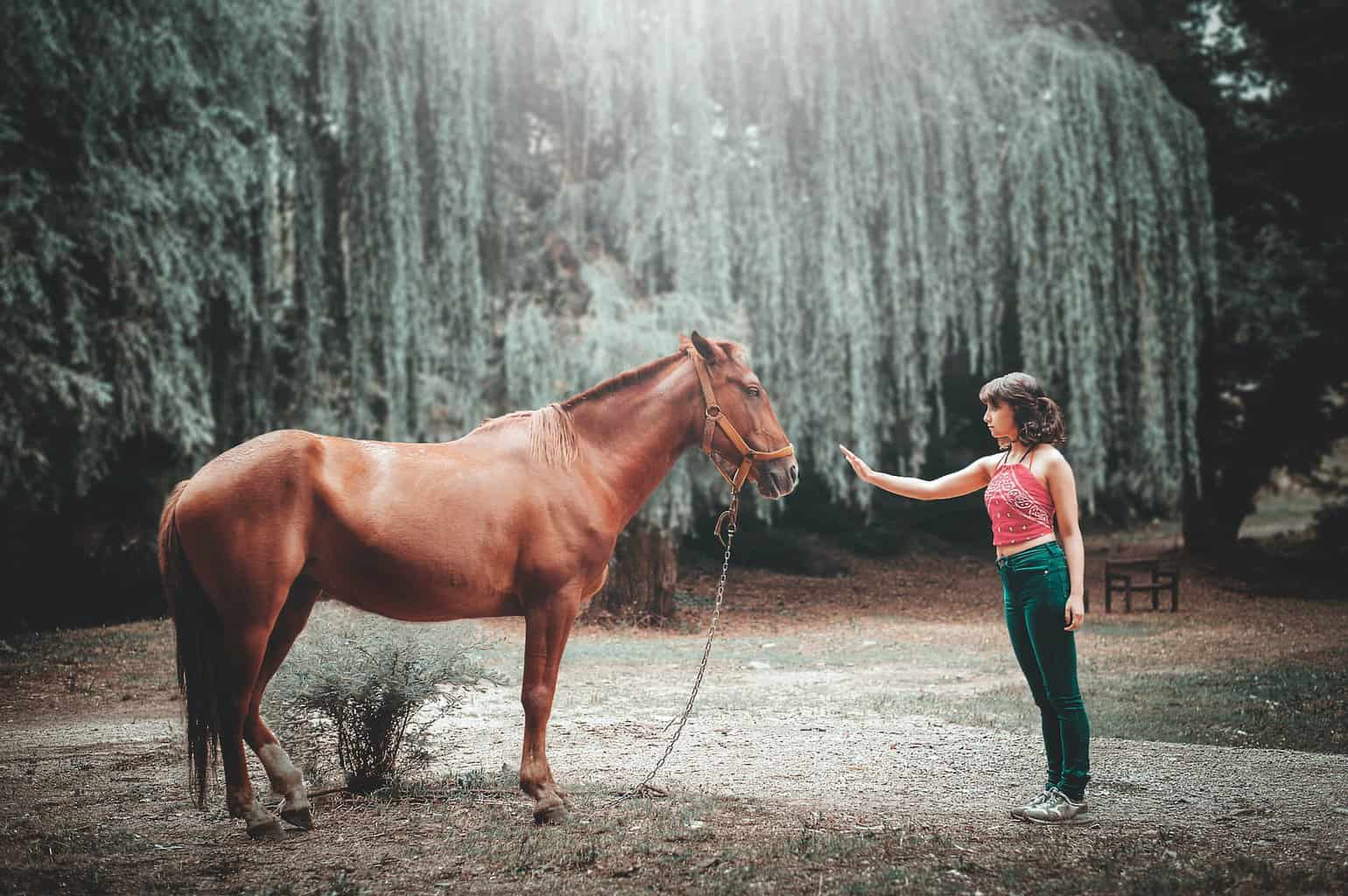
Bottom Line Up Front
If you want a horse to trust you, you must make them feel safe and secure, and you can do this by demonstrating good leadership skills.
To be a good leader, you must be calm, even-tempered, confident and consistent with training. You can also learn about natural horsemanship, which focuses on body language and non-violent communication to gain a horse’s trust.
Understanding the Equine Mind
To gain a horse’s trust, first, you need to understand how their mind works. Horses are flight animals – they need to feel secure and will instinctively flee from dangerous situations. They respond well to praise and don’t like it if you put them under pressure.
Being herd animals, horses respect a strong, calm leader. If they trust your leadership skills, they will be more confident in situations which make them feel uneasy. In a horse’s eyes, a good leader is calm, fair, and consistent and gives clear instructions.
Horses and ponies are incredibly sensitive creatures – they can sense your mood and are experts at reading body language. They react to the signs you give them and reflect your attitude. So, If you’re anxious around a horse, chances are the horse will also be anxious.
Horses don’t judge you on your personality – they will judge you on your leadership skills and whether you make them feel secure. It is hard to build trust if you make a horse feel anxious or nervous.
Horses have a sense of fairness and can become frustrated with their rider or handler if they think they’re a victim of unfair treatment. All horses are unique – some are more tolerant and forgiving than others.
Natural Horsemanship vs Traditional Horsemanship
I find that the best way to establish a good relationship with horses is by using natural horsemanship techniques. Natural horsemanship uses body language and clear non-violent communication to get horses to cooperate, instead of intimidation.
Natural horsemanship works with a horse’s instincts and incorporates aspects of herd hierarchy and behavior to work harmoniously with them. As opposed to traditional horsemanship, which believes in “breaking” a horse’s spirit and using fear and intimidation to get them to do what you want.
Popular Natural Horsemanship Techniques
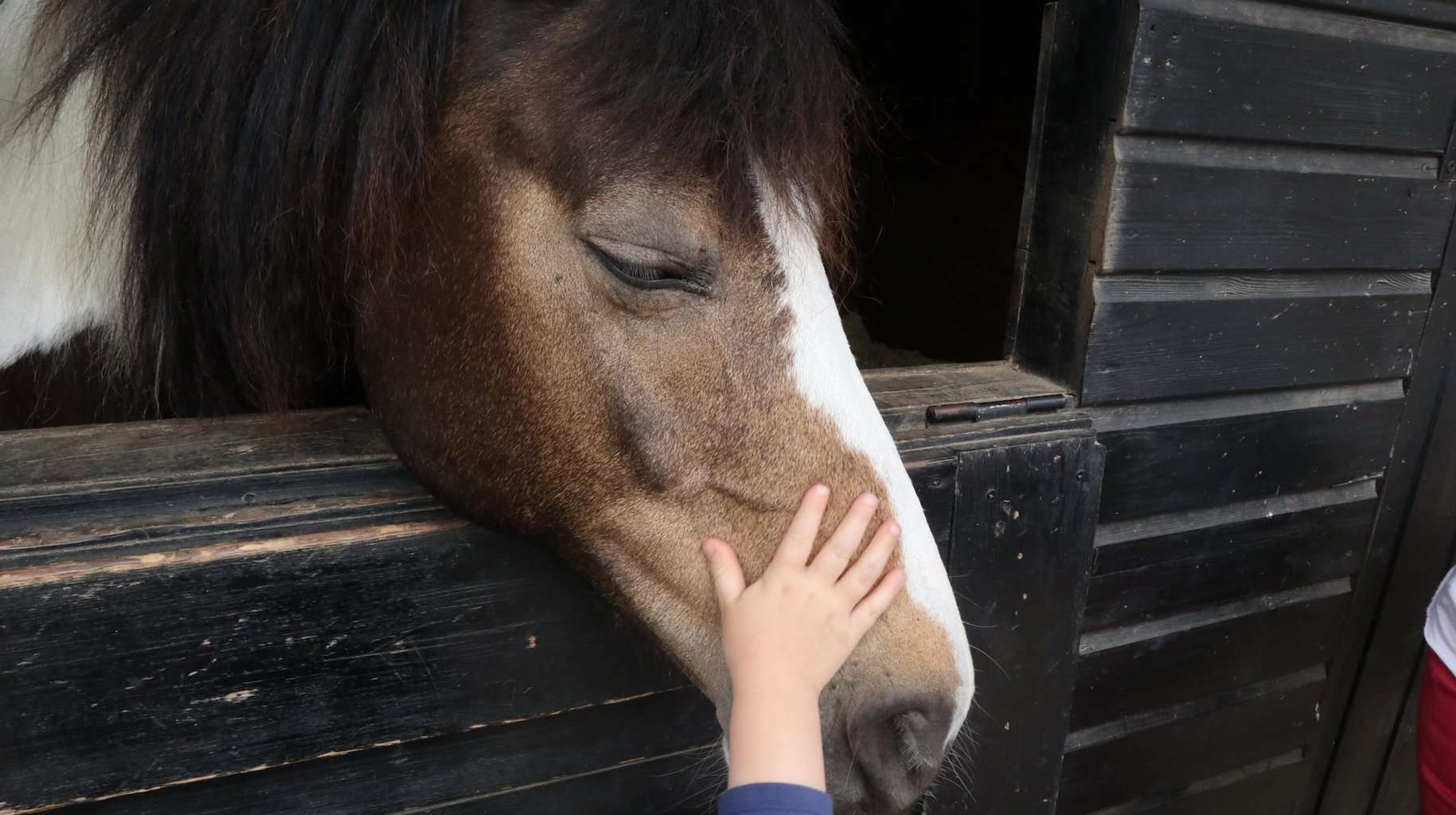
When it comes to natural horsemanship, my favorite teachers are Monty Roberts and Pat Pirelli. They are renowned leaders in the global equine community and pioneers in non-violent equine communication.
Monty Roberts
Monty Roberts is the original horse whisperer, famous for his “Join Up” technique. He spent many years observing wild Mustangs to learn about herd dynamics, behavior, and equine communication.
He discovered that in a herd, horses communicate clearly with each other to express annoyance or contentment. They set boundaries and use simple signals to invite herd members in or to send them away.
The join-up technique mimics the herd hierarchy and is effective on horses of all ages and training levels. It’s a non-violent communication system based on trust rather than intimidation.
Pat Pirelli
Pat Perelli uses ”love, language and leadership” to gain trust with horses. His technique uses seven games to train both horse and handler in equine communication. The games help you to build rapport with a horse, gain respect, balance impulsions and develop growth and performance.
If you’ve ever seen anyone riding without reins and a saddle or getting their horse to rear on demand, chances are, they practice Perelli natural horsemanship. The Perelli technique is fun and rewarding for horse and rider and yields impressive results.
How to Get a Horse to Trust You in 8 Easy Steps
If I want to gain a horse’s trust, first, I will correctly introduce myself. I use plenty of praise and rewards during training and spend time bonding with the horse outside the usual barn routine. I find that understanding equine body language is also a key factor in gaining trust, and I never force horses to do things they don’t want to do.
If you want to know how to build a trusting relationship with your horse, take a look at my top tips below:
Tip #1 – Introduce Yourself the Right Way
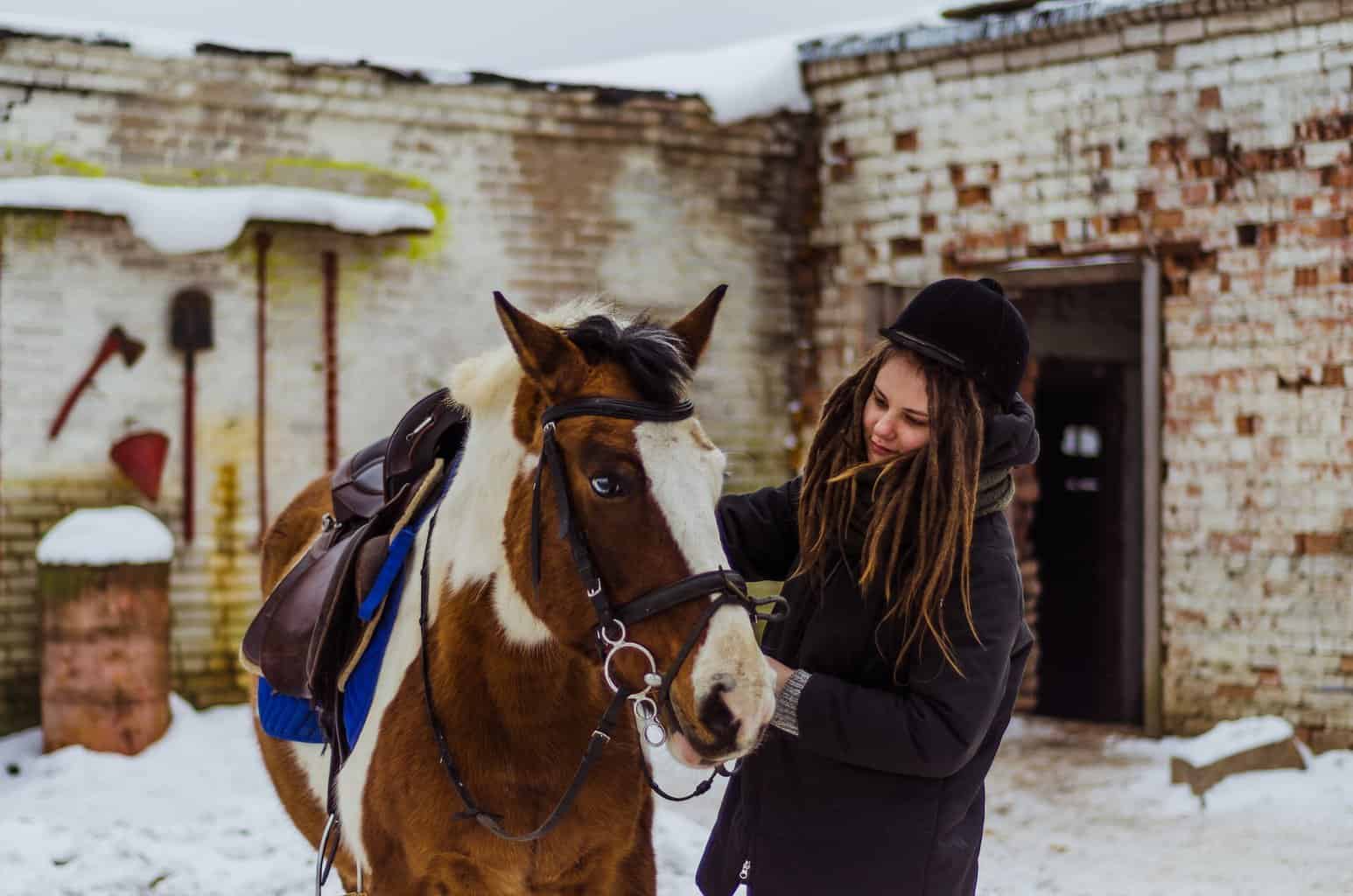
First impressions are crucial if you want to gain a horse’s trust. I always use non-threatening body language when I meet a horse, meaning I never march up to them and try to stroke them on the face. Instead, I walk towards them side-on, slowly and gently, without making eye contact.
I stop a short distance away from the horse and invite them to make the first connection by offering them my hand. If the horse sniffs my hand, this means that it’s inviting me into its space.
When I know the horse is comfortable with my presence, I stroke or scratch it on the neck, the equivalent of a friendly groom between horses.
Tip #2 – Spend More Time with Your Horse
We all love spending time with our horses, but often, we do it routinely, such as riding or grooming. If you want to discover a horse’s true personality, spend more leisurely time with them.
This could be hanging out with them and their herd mates in the paddock, sitting with them in a stable or going for leisurely walks with a halter and lead rope. Spending time with your horse outside the regular barn routine will encourage them to trust you more – and they won’t just associate you with work.
Read More: How to Find the Best Horse Halter
Tip #3 – Use Your Voice
I’m a big fan of using voice aids with horses. I find that they’re incredibly responsive to them, and it’s one of the most effective ways to send a clear message. Some people are reluctant to talk to horses, but the voice is a powerful tool when gaining an equine’s trust.
I use an upbeat, happy tone to praise horses, a deep, firm one if they are playing up, and a soft, soothing one if they are uncomfortable or afraid. I make the distinction between the different tones clear, so the horse understands them.
Tip #4 – Learn about Equine Body Language
To gain trust with a horse, you must understand what they are trying to say to you. Horses can’t talk, so they depend on body language to communicate. When you understand equine body language, you can tell when a horse is comfortable or frustrated.
Signs that a horse is comfortable with you:
- A relaxed body
- Willingness to approach
- Happy to lay down when you are around
- Lowering their head
- Relaxed ears (airplane ears)
- Attentively listening to you
- Letting you touch them all over
- Gentle nudges with their muzzle
- Resting their head on you
- Gentle grooming
- Making soft nickering noises
Signs of a frustrated horse:
- Tail swishing
- Tensing body
- Kicking out
- Rearing
- Being uncooperative
- Tense nostrils and lower lip
- Ears flat against the back of their head
- Hyper alert and moving around to keep you in their view
If a horse shows relaxed body language, this is a sign that it trusts you and is happy to follow your commands. If they are showing signs of frustration, you should back off and analyze the situation to discover why the horse is feeling frustrated with you.
Tip #5 – Be a Good Leader
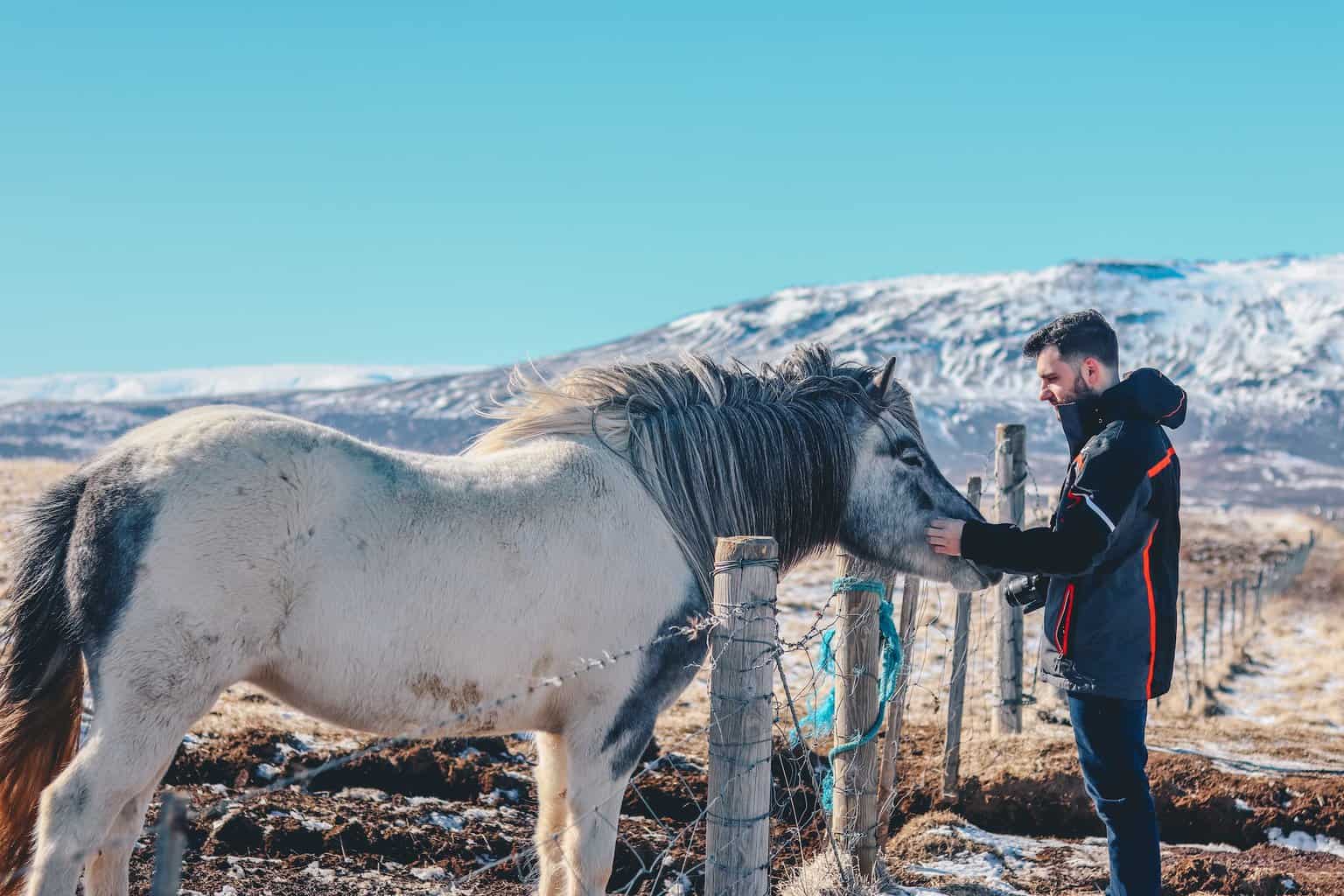
As I previously mentioned, being herd animals, horses trust and respect a good leader. In the equine world, a good leader is calm, rational and not aggressive or bossy. Of course, horses will obey commands out of fear, but they won’t trust you as a leader.
If you want to prove yourself as a good leader, you should:
- Be calm
- Be reasonable
- Be patient
- Observe and respond to body language
- Be consistent
- Be confident
- Don’t lose your temper.
- Don’t put horses under pressure.
Tip #6 – Never Force a Horse to Do Things
One of the most effective ways to gain trust is to listen to horses when they say no and allow them to retreat from situations they don’t feel confident in. I never force or rush horses into doing things they’re not comfortable with.
If a horse is acting up and being uncooperative, they are most likely doing it out of fear. To build a horse’s confidence in an uncomfortable situation, I let it retreat from the obstacle or setting and then approach again slowly, with patience.
If a horse has problems loading in a trailer, I would never force them in by pushing, pulling, shouting or chasing them in with a crop. Instead, I give them a loose rein and let them approach the trailer at their own pace. I will also get on the ramp and go into the trailer to demonstrate there is no risk and use a soothing voice to encourage them in.
If this doesn’t work, I use treats to tempt them in and to reward them when they enter. I usually use a bucket of concentrated food or carrots, which I can rattle. When the horse enters the trailer, I praise them and let them eat the food or treats. The result is that the horse won’t associate the trailer with fear – it will associate it with treats and rewards and will be super confident the next time it loads.
I use the same approach for any situation a horse may be uncomfortable with, such as a farrier or vet visit, clipping, jumps, and entering a new environment. I find that with confidence, patience and tasty rewards, you can persuade a horse to do almost anything.
Tip #7 – Use Rewards
I always use rewards when training horses because it’s a fantastic way to tell them when they’re performing well. Horses love treats and respond well to praise and rewards. Sometimes, I use tasty treats as rewards for good behavior, but I also use my voice to praise them or give them a pat on the neck or a scratch in their favorite place.
Tip #8 – Address Your Feelings
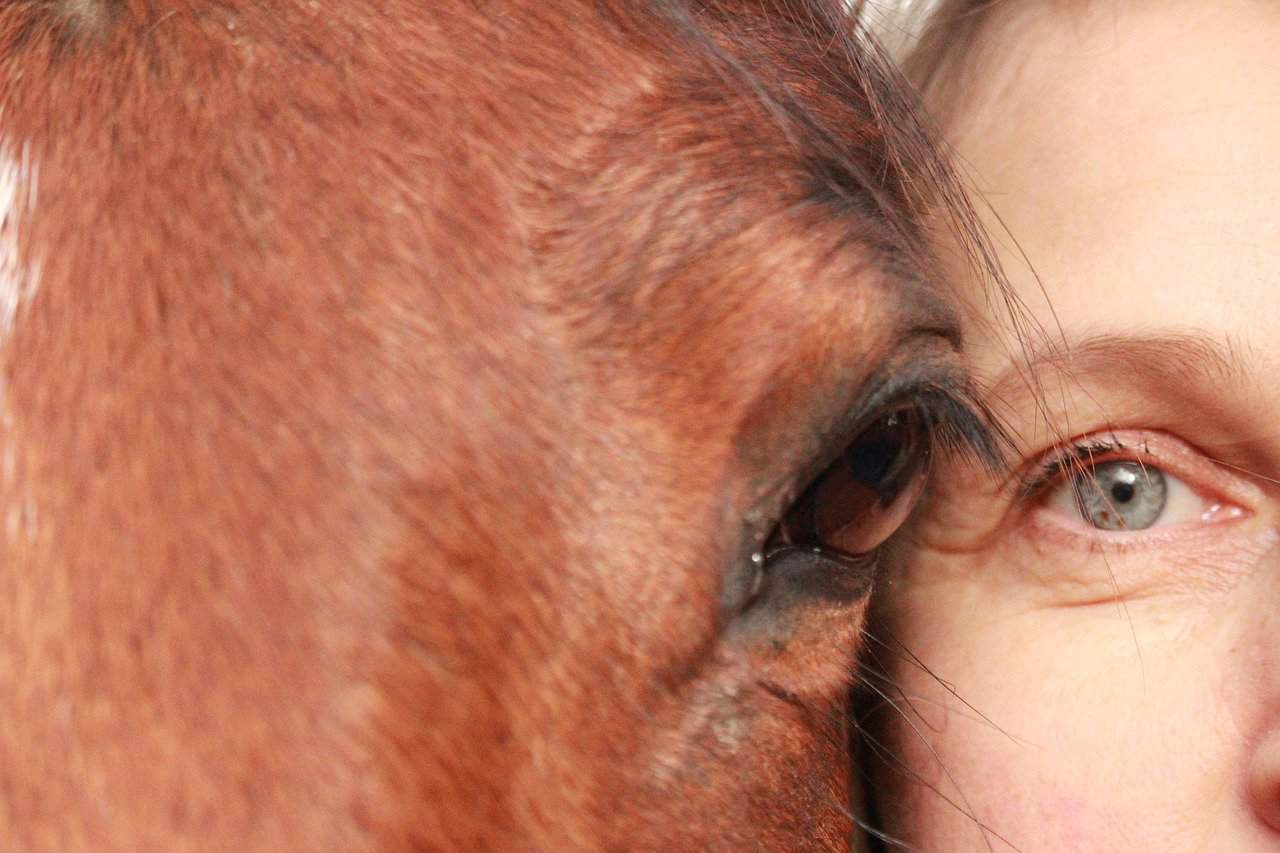
I know from experience that horses are incredibly sensitive, and can intuitively tell what kind of mood I’m in. If you are intimidated by a horse, it will sense your unease, which makes them nervous. If you’re angry and tense, the horse will be too. If you’re uncooperative and unwilling to listen, neither will the horse be.
Horses reflect the feelings we project, so if a horse doesn’t trust you, you should look at your own feelings. It’s easy to lose confidence in a horse if you’ve had a bad experience. In this case, it is a good idea to build confidence back slowly, enroll on a course, clinic or workshop or get lessons from a natural horsemanship practitioner or equine trainer.
FAQs
Answer: I find that the best way to bond with a horse is by spending time with them outside of the barn routine. I like to hang out with them in the stable or paddock and watch how they interact with their herd mates or take them for a leisurely walk on a halter.
To form a deep relationship, you should learn about natural horsemanship, equine body language and how to present yourself as a trustworthy leader.
Answer: You can tell if a horse trusts you when they are willing to approach you and have relaxed body language. Relaxed body language includes soft airplane ears, attentiveness, gentle nuzzling, a lowered head and lying down in your presence.
Answer: Stubborn or rebellious horses don’t respond well to dominating or intimidation techniques – if anything, it makes them worse. The best way to get a stubborn horse to respect you is by using natural horsemanship methods and good leadership skills to gain their trust.
How to Get a Horse to Trust You – Summary
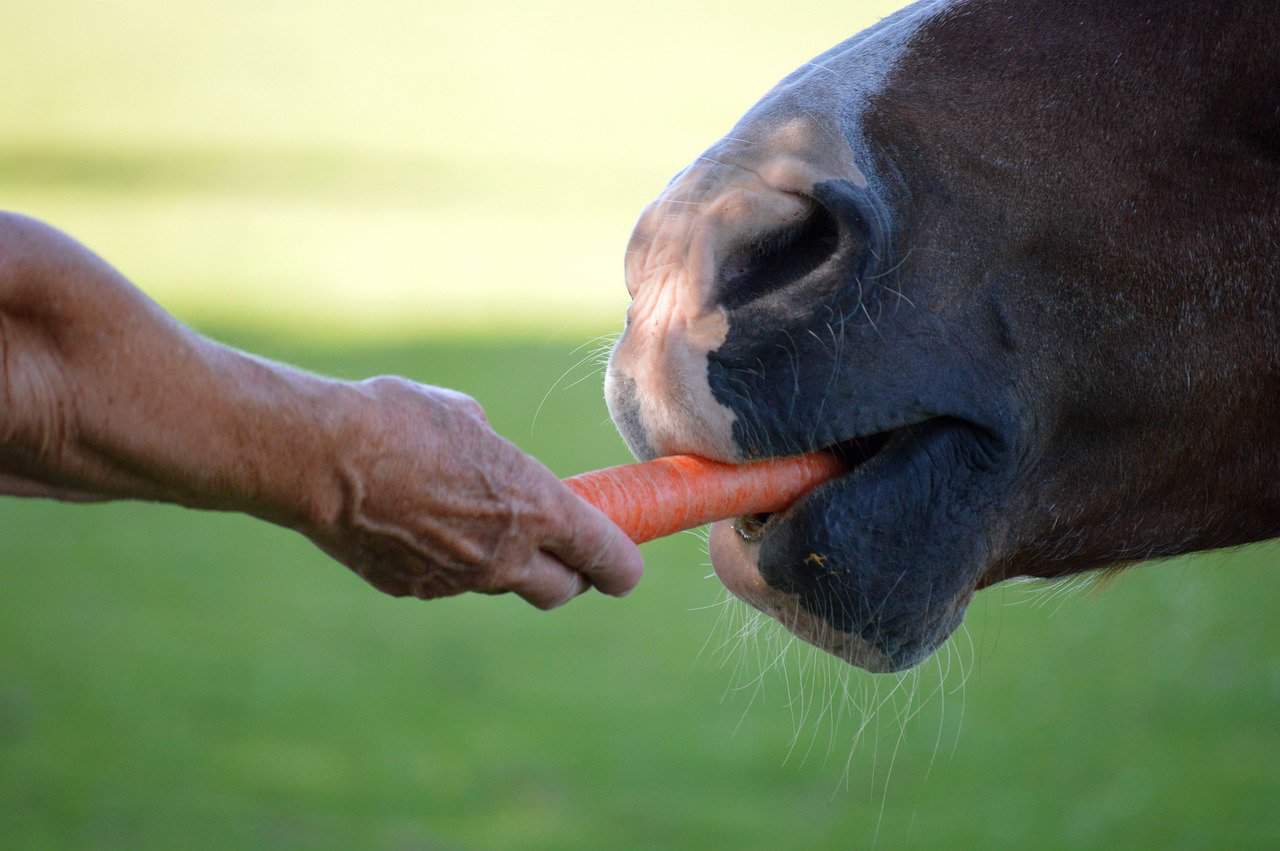
If you want a horse to trust you, you must show them you’re a calm, considerate leader. Horses are herd animals and will trust and respect you if you demonstrate good leadership skills. In a horse’s eyes, a good leader is calm and even-tempered, yet confident and assertive.
You should learn about natural horsemanship to form a deep, trusting bond with a horse. Natural horsemanship uses non-violent communication methods based on herd behavior and body language, as opposed to traditional horsemanship, which often depends on domination and intimidation.
Resources
- Horsemanship, P. N., & Horsemanship, P. N. (2023). Signs your horse trusts you. Parelli Natural Horsemanship.
- Kacey. (2023, May 10). How To Get A Horse To Trust You: A Step by step Guide. Joyful Equestrian.
- Parelli, P. (2023). Parelli Natural horsemanship: The Seven Games. Horse Illustrated Magazine.
- Ricketts, J. (2023). Monty Roberts: Revolutionising horse training through Join-Up.
- Roberts, M. (2023, September 17). Monty Roberts – The Man Who Listens to Horses – Trust-Based Horsemanship. Monty Roberts.
- Samuels, K. (n.d.). Why Fear-Based Training is Never the Answer – Eventing Nation – Three-Day Eventing News, Results, Videos, and Commentary.

